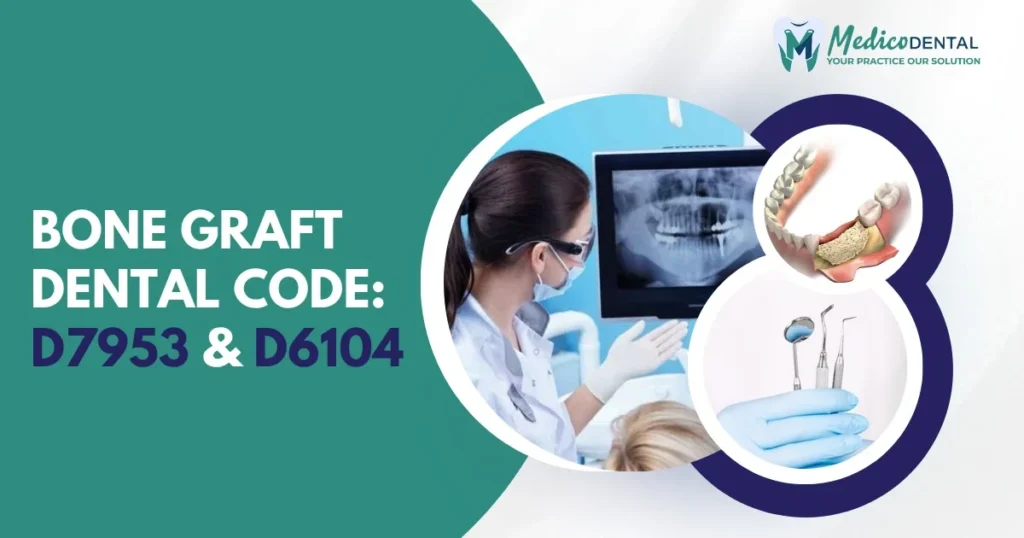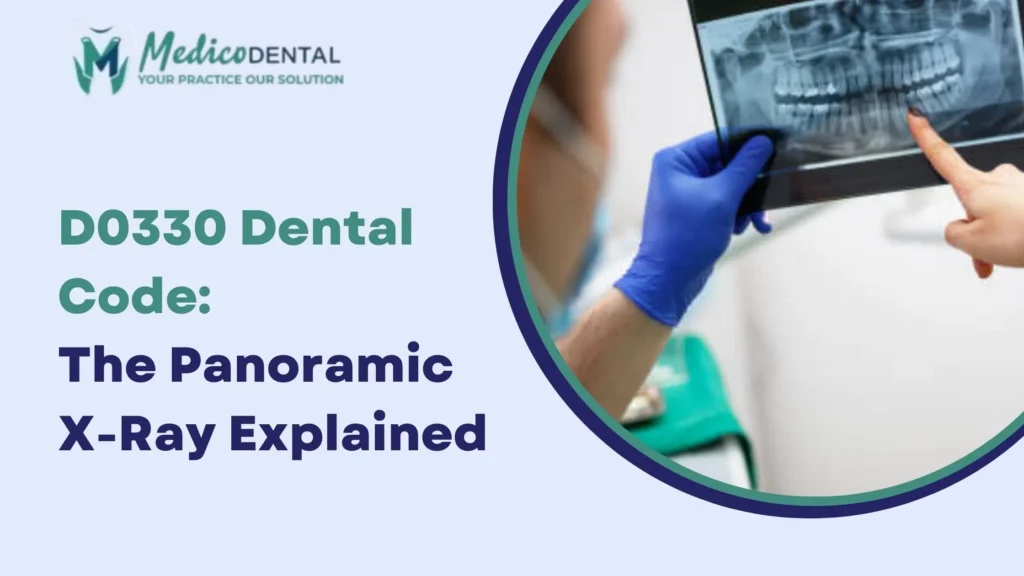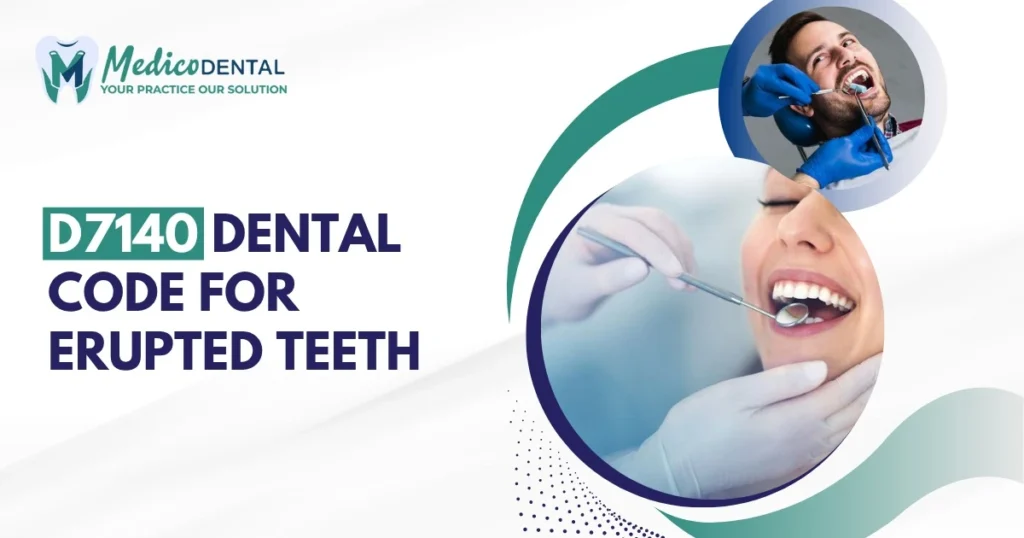In modern dentistry, bone grafting has become an essential procedure to restore and preserve oral structures for implant placement, periodontal health, and facial aesthetics. Understanding the correct bone graft dental code is critical for accurate billing, documentation, and insurance reimbursement. Whether performed as part of implant surgery or periodontal treatment, selecting the right code ensures that providers receive proper compensation while maintaining compliance with CDT (Current Dental Terminology) standards.
Understanding the Purpose of Bone Graft Procedures in Dentistry
Bone grafting procedures play a vital role in dental care, particularly in restoring bone volume lost due to trauma, periodontal disease, or tooth extraction. These grafts help rebuild the jawbone to provide stability and support for implants, dentures, or natural teeth. By replacing or augmenting bone tissue, dentists can maintain the patient’s facial structure and improve long term oral function.
When Bone Grafts Are Needed in Dental Treatments
Bone grafts are typically required when a patient experiences bone loss or when additional bone support is needed to complete a specific treatment plan. Common situations include:
- After a tooth extraction to preserve the ridge structure
- Before or during dental implant placement
- In periodontal surgery to restore bone around natural teeth
- Following cyst or tumor removal in the jawbone
These procedures are not only restorative but also preventive maintaining the strength of the jawbone and preventing complications that could compromise future treatments.
Common Materials Used in Bone Grafting
Bone grafts can be derived from various materials, depending on the clinical need and patient condition. The most common materials include:
- Autografts Bone taken from the patient’s own body, such as the chin or hip.
- Allografts Bone from a human donor or tissue bank.
- Xenografts Bone material from animal sources, typically bovine.
- Alloplasts Synthetic bone substitutes made from materials like calcium phosphate or hydroxyapatite.
Each material has its own benefits in terms of healing potential, availability, and cost. The choice of graft material often impacts the bone graft dental code selected for reporting.
How Bone Grafts Support Implants and Oral Health
Bone grafts are essential for successful implant dentistry. When bone density or volume is insufficient, grafting creates a stable foundation for the implant. In periodontal therapy, grafts regenerate bone lost to gum disease, reducing tooth mobility and improving oral health. Overall, bone grafting procedures enhance aesthetics, strengthen the jaw, and ensure the longevity of dental restorations. Accurate documentation and the use of the correct bone graft dental code help convey the complexity and value of these treatments for insurance claims.
Overview of CDT Bone Graft Dental Codes
Dental professionals use CDT codes standardized by the American Dental Association to report procedures for reimbursement and recordkeeping. Understanding how these codes apply to bone grafting ensures clear communication between dental providers, insurance payers, and patients.
What Is a CDT Code and Why It Matters
A CDT (Current Dental Terminology) code is a five character alphanumeric code used to describe dental procedures. These codes are essential for:
- Claim submission and insurance processing
- Legal documentation of patient care
- Tracking procedures for practice analytics and compliance
When it comes to bone grafts, each bone graft dental code specifies the type of procedure performed, the treatment site, and whether it’s associated with a natural tooth or implant. This specificity helps prevent claim denials and billing discrepancies.
Categories of Bone Graft Dental Codes
Bone graft codes are categorized based on their application in dental treatment. The primary categories include:
- Ridge preservation and reconstruction codes Used after tooth extraction to maintain bone volume.
- Sinus augmentation codes Used to build bone in the maxillary sinus for implants.
- Periodontal and periradicular graft codes Used when bone grafts are part of gum or root surgeries.
- Implant related graft codes Used for grafts placed at the time of implant insertion.
Each category corresponds to a unique bone graft dental code, making precise coding vital for accurate reporting.
Detailed List of Common Bone Graft Dental Codes
Proper identification of CDT codes for bone grafts allows for efficient billing and accurate insurance claims. Below are some of the most frequently used bone graft dental codes and their descriptions.
D7950 Osseous, Osteoperiosteal, or Cartilage Graft
D7950 is used for bone graft procedures involving the maxilla or mandible that are not related to ridge preservation or implants. This code typically covers cases where a structural bone graft is performed to rebuild major defects caused by trauma, cysts, or resorption. Documentation should specify the source of the graft material and the anatomical site treated.
D7951 Sinus Augmentation with Bone or Bone Substitutes
D7951 applies when a sinus lift or augmentation is performed using bone or bone substitutes. This procedure increases bone height in the upper jaw, creating enough support for dental implants. Proper claim narratives should indicate whether the procedure was direct or indirect and if a membrane or grafting material was used.
D7953 Bone Replacement Graft for Ridge Preservation
D7953 is the bone graft dental code used after tooth extraction to preserve the alveolar ridge. It involves placing bone graft material in the extraction socket to maintain bone height and width. This code is often used by implant dentists to ensure future implant stability and maintain the contour of the jawline.
D6104 Bone Graft at Time of Implant Placement
When bone grafting is performed concurrently with implant placement, D6104 should be used. It indicates that bone material was added around the implant to improve stability or fill gaps. This code should not be confused with D7953, which is used after extraction, not during implant insertion.
D4263 and D4264 Bone Graft in Periodontal Surgery
D4263 refers to a bone replacement graft placed during periodontal surgery for the first site in a quadrant, while D4264 is for each additional site within that same quadrant. These codes are used when grafting around natural teeth to treat bone loss caused by periodontal disease. Proper charting should include pocket depth and defect type for verification.
D3428 and D3429 Bone Graft with Periradicular Surgery
D3428 and D3429 are codes for bone grafts performed in conjunction with periradicular (root end) surgery. D3428 covers the first tooth, while D3429 is for additional teeth in the same area. These codes are often used by endodontists to report bone repair procedures after apicoectomy or cyst removal.
D6103 and D1354 Additional Bone Graft Codes
- D6103 is used for bone grafting to repair a peri implant defect, such as bone loss around an existing implant.
- D1354 refers to the harvest of autogenous bone material for use in another grafting procedure.
These codes help clarify when bone repair or harvesting occurs outside of implant or periodontal procedures, ensuring that the bone graft dental code accurately reflects the service provided.
How to Select the Correct Bone Graft Dental Code
Choosing the right code requires understanding the purpose, timing, and location of the graft procedure. Mistakes in coding can delay reimbursement or lead to denied claims, so attention to detail is essential.
Factors That Affect Code Selection
When determining which bone graft dental code to use, consider:
- Procedure intent: Is it for ridge preservation, implant support, or periodontal regeneration?
- Timing: Was the graft done immediately after extraction or alongside an implant?
- Location: Is it for a natural tooth area, implant site, or sinus?
- Material source: Autograft, allograft, or synthetic substitute.
Each factor influences which CDT code should be applied for accurate reporting.
Documentation and Clinical Notes Requirements
Detailed clinical documentation supports accurate code selection and claim approval. Dentists should record:
- The diagnosis and treatment rationale for the graft
- Type and amount of grafting material used
- Anatomical site and surgical approach
- Any membrane placement or additional procedures
Clear documentation helps justify the treatment’s medical necessity and ensures that the bone graft dental code aligns with payer guidelines.
Avoiding Common Coding Errors
Common errors in reporting bone grafts can lead to claim rejections or underpayment. Some of the most frequent mistakes include:
- Using D7953 (ridge preservation) for implant grafting instead of D6104
- Failing to document whether the graft was related to a natural tooth or implant
- Omitting membrane use or grafting material details
- Submitting incomplete narratives without diagnostic justification
By staying informed about CDT updates and payer requirements, dental practices can reduce denials and improve billing accuracy.
Insurance Coverage and Reimbursement for Bone Graft Dental Codes
Insurance coverage for bone grafting procedures often varies depending on the purpose of the treatment and whether the service is considered medically or dentally necessary. Understanding how reimbursement works for each bone graft dental code can help practices avoid denials and optimize claim approval. Since bone grafts may fall under dental or medical coverage, proper code selection and documentation are crucial in determining reimbursement eligibility.
Bone graft procedures can be complex, and insurance carriers often require supporting evidence that explains why the graft was necessary. This is especially true when the graft is associated with implants, ridge preservation, or sinus augmentation. Knowing how to navigate these nuances allows providers to ensure smoother claim processing and faster payment turnaround.
Understanding Medical vs Dental Billing for Bone Grafts
One of the most common challenges in billing bone grafts is determining whether to submit the claim to a dental or medical insurance payer. The distinction depends largely on the reason for treatment:
- Dental billing applies when the bone graft supports a dental structure for example, ridge preservation after extraction or a graft performed as part of periodontal therapy.
- Medical billing may apply if the bone graft addresses a medical condition, such as bone loss from trauma, tumor removal, or congenital defects.
In some cases, the same procedure could be billed differently depending on the documentation. For instance, a graft after a cyst removal might qualify as a medical procedure, while the same graft after a routine extraction would be dental.
To determine the correct billing path, the narrative should clearly describe the medical necessity and clinical purpose of the procedure. This distinction ensures that the bone graft dental code is properly categorized and accepted by the payer.
Payer Guidelines and Preauthorization Tips
Every insurance company has its own coverage criteria for bone graft procedures. Many carriers require preauthorization before performing bone grafting particularly for grafts associated with implants or sinus lifts. Without preauthorization, even valid claims can be denied or delayed.
Key tips for smooth processing include:
- Submit detailed treatment plans with radiographs and clinical notes.
- Specify the graft material used, such as allograft or synthetic substitute.
- Clarify the purpose of the graft whether it’s ridge preservation, sinus augmentation, or implant support.
- Include CDT and ICD 10 codes that clearly connect diagnosis and treatment.
By aligning the claim with payer specific rules, practices can minimize the risk of rejections and ensure that each bone graft dental code matches the insurer’s benefit structure.
Maximizing Reimbursement Through Accurate Coding
Accurate use of bone graft dental codes directly impacts reimbursement levels. Each CDT code represents a specific type of graft and purpose, so submitting the wrong code can lead to payment delays or underpayment. For example, using D7953 (ridge preservation) for a graft done during implant placement may result in denial, since D6104 is the correct code in that scenario.
To maximize reimbursement:
- Always cross check codes with the CDT manual for the current year.
- Maintain detailed documentation of the grafting process, including materials and location.
- Use accurate narratives that describe medical necessity.
- Double check for duplicate or conflicting procedure codes on the same date of service.
Consistent auditing and coding accuracy not only improve revenue but also protect the practice from compliance issues.
Role of Dental Billing Experts in Managing Bone Graft Codes
Dental billing for bone grafts can be complex, involving both technical procedure codes and payer specific requirements. This is where specialized billing experts play a crucial role. Trained billing professionals understand the intricacies of CDT and ICD 10 code combinations, narrative preparation, and insurer documentation standards all of which are essential for successful claim processing.
Hiring or partnering with experts experienced in bone graft dental codes helps practices maintain compliance while improving financial outcomes. Their knowledge ensures every claim meets payer expectations and that no revenue is lost due to clerical or coding errors.
Importance of Specialized Billing Support
Specialized billing teams bring a level of precision and expertise that general administrative staff may not have. Bone graft coding requires familiarity with:
- CDT updates that occur annually
- Payer specific rules for implant related grafts
- Proper use of modifiers and narratives
- Handling cross coding between medical and dental payers
These professionals also stay current with ADA and insurance policy changes, reducing the risk of outdated coding practices. Their support allows dental providers to focus more on patient care while maintaining accurate and timely reimbursement for all bone graft dental codes.
Streamlining Claims and Reducing Denials
One of the biggest advantages of working with experienced billing professionals is the ability to streamline claims. They create efficient workflows that include pre verification of benefits, preauthorization requests, and accurate claim submission.
Some proven strategies include:
- Verifying eligibility before scheduling bone graft procedures.
- Submitting detailed narratives with supporting documents (e.g., radiographs, treatment notes).
- Tracking claim progress and promptly addressing payer inquiries.
- Reviewing Explanation of Benefits (EOBs) for accuracy and following up on underpaid claims.
This proactive approach not only reduces denials but also improves cash flow and claim turnaround times, which is vital for busy dental practices performing graft procedures.
Best Practices for Reporting Bone Graft Dental Codes
To maintain efficiency and compliance, dental professionals must follow best practices when reporting graft procedures. Each bone graft dental code should accurately reflect the clinical service performed and align with the patient’s treatment plan. Proper documentation and coordination with related procedures like implants or periodontal therapy ensure clarity and minimize billing discrepancies.
Supporting Documentation and Claim Narratives
Insurance carriers rely heavily on documentation to verify that a bone graft was necessary and performed correctly. The narrative should clearly describe:
- Reason for the graft (such as bone loss, ridge preservation, or implant stabilization)
- Specific site of the graft (upper left molar region, sinus area, etc.)
- Type of material used (autograft, allograft, xenograft, or synthetic)
- Outcome or goal of the treatment
In addition, any complications or additional procedures performed during surgery should be included. Clear, detailed documentation ensures that the bone graft dental code supports the narrative and matches the insurance company’s claim review criteria.
Coordination with Implant and Periodontal Procedures
Bone grafting is often performed alongside implant placement or periodontal therapy. To prevent claim overlap or confusion, providers should ensure that each procedure is coded and documented separately.
For example:
- Implant and graft performed together: Use D6104 for the graft and the appropriate implant placement code.
- Periodontal grafting: Use D4263 for the first site and D4264 for additional sites.
- Ridge preservation before implant: Use D7953, noting future implant placement in the treatment plan.
Accurate sequencing and coordination between related procedures enhance transparency, making it easier for insurers to process claims without delays or denials.
Final Thoughts
The key to success in bone graft billing lies in understanding both the clinical and administrative sides of the process. Dentists must ensure that their clinical documentation aligns with CDT code definitions, while billing teams must stay current with payer rules and policy updates.
By mastering the use of each bone graft dental code, maintaining thorough documentation, and investing in skilled billing support, practices can significantly reduce claim errors and improve reimbursement rates. Streamlined billing not only supports financial health but also enhances the patient experience allowing providers to focus on delivering high quality dental care without the stress of insurance complications.
FAQs
What is a bone graft dental code?
Ans. A bone graft dental code is a CDT code used to accurately report bone grafting procedures for billing and insurance purposes.
Why are bone grafts necessary in dentistry?
Ans. Bone grafts restore lost bone structure to support implants, natural teeth, or overall jaw stability.
What are the most common bone graft dental codes
Ans. Common codes include D7950, D7953, D6104, D4263, and D3428, each representing specific graft types and procedures.
How do I choose the correct bone graft dental code?
Ans. Select the code based on the graft’s purpose, timing, location, and material used.
Are bone grafts covered by insurance?
Ans. Coverage depends on whether the graft is medically necessary or part of a dental restoration procedure.



